I am in London this morning at the London Defence Conference, where Prime Minister Keir Starmer delivered a keynote speech outlining his vision for ensuring that the UK’s record-high defence investment ‘directly benefits working people’.
The speech, delivered on VE Day, marks a reflection on past sacrifices while focusing on how the country can seize a modern “defence dividend.”
Addressing the packed audience, Starmer make clear the need to translate increased defence spending—currently at its highest since the Cold War—into tangible gains for communities across the UK. He says: “Our task now is to seize the defence dividend – felt directly in the pockets of working people, rebuilding our industrial base and creating the jobs of the future.”
Starmer highlighted that the government’s boost to defence investment will not only ensure safety and security but also cement the UK’s status as a defence industrial leader. He stressed that this approach will deliver “an investment in peace, but also an investment in British pride and the British people to build a nation that, once again, lives up to the promises made to the generation who fought for our values, our freedom and our security.”
Reflecting on the legacy of VE Day, the Prime Minister paid tribute to the veterans who secured victory 80 years ago and praises today’s service personnel for their ongoing commitment. He remarked: “Britain’s victory was not just a victory for Britain. It was a victory for good against the assembled forces of hatred, tyranny and evil, for the light of our values – in a world that tried to put them out.”
Starmer also acknowledges the continued presence of threats to the UK’s values and security, saying: “Now, as you know, there are people who would happily do likewise today. Our values and security are confronted on a daily basis. We must use this moment to deliver security and renewal for our country.”
During the speech, the Prime Minister announced a significant investment, unveiling a £563 million contract with Rolls-Royce for the maintenance of the UK’s fleet of Typhoon fighter jets. The contract will cover maintenance of 130 engines, with work taking place at Rolls-Royce sites in Bristol and beyond, securing hundreds of high-skilled jobs.
He said: “This investment is not just about maintaining our defence capabilities; it is about boosting our economy and demonstrating that British engineering remains at the heart of our national renewal.”
The theme of “Alliances” is a key focus at the conference, and Starmer underscores the importance of collaboration between the state, industry, and society, as well as reinforcing the UK’s commitment to NATO and Western values.
He stated: “A national effort. A time for the state, business, and society to join hands, in pursuit of the security of the nation and the prosperity of its people.”
The London Defence Conference brings together policymakers, military leaders, defence firms, and experts from around the world.
Image Frank Kovalchek, CC BY 2.0, via Wikimedia Commons.



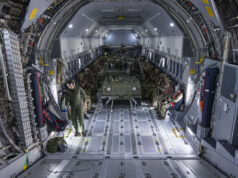

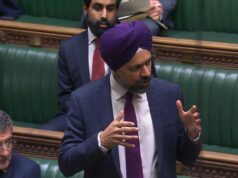

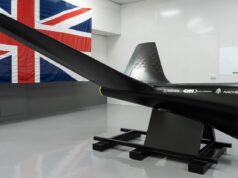


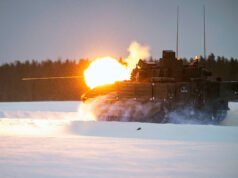

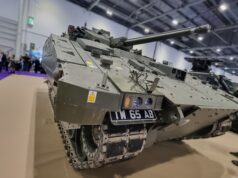

Oh, for the day when a PM highlights that the military is too small, rather than the usual industry / jobs side, which I’ve suggested countless times here is how they primarily see the MoD budget.
I always find it bizarre that people don’t seem to click that the military are good quality jobs for working people.. the government could instantly make around 20,000ish high quality tax paying.. high spending jobs if it gave the army navy and airforce the manpower boost it needed..
I echo the responses about the military being to small. We need to increase headcount, but short of a further increase in the conventional military threat to the UK I can’t see it happening any time soon.
I was also hoping that the PM would give a hint about when we can expect the Defence Review to be published, but its still wait out.
Defence spending is not at anything approaching its “highest since the Cold War”- even in nominal USD cash terms ignoring inflation- it remains lower now than it was just before the financial crisis in 2008. As a proportion of GDP spending was around 4% of GDP immediately after the Cold War ended, after which time it underwent a steady decline until about the year 2000, whereupon it hovered around about the 2.5% mark until the financial crisis, after which it was allowed to dip to absurdly low levels. A ‘bold’ commitment to increase spending to 2.5% of GDP by 2027 would only put us back to roughly the post-Cold War average, and nowhere near the actual Cold War spending levels we would expect to see if the Government was genuinely taking the threat of renewed global conflict seriously. That would be nearer the 5% mark (cf. Poland’s current spending).
I hate it when politician either flat out lie or weasle their way around the truth by not accounting for inflation or changes to the baseline of what counts toward defence spending. This was a Defence Conference. Every person there would have known he was lying and yet the reporters transmit his words his words without comment. It’s as though everone is sick and iered of pointing out that as a percentage of GDP, current spending on conventional defence capability is close to the lowest it has been since the Act of Union created the UK. Only a handful of years, most of them recent, come lower.
I heard John Major on the radio this morning talking about the danger of people forgetting the Second World War. Nobody forgot it sooner than Nigel Lawson and John Major. Between 1985 and 1997 when Major lost to Blair, the UK Defence budget dropped from 5.5% of GDP (a post-Falklands high) to 2.5%. They cut almost two thirds of the budget over 12 years! I wanted someone to ask him, do you regret that? But nobody ever does, and he doesn’t look back.
Exactly. Those who have the chance to put these people on the spot, journalists, are lacking in the knowledge needed.
Actually, from my perspective it feels like one of the main issues with modern politics is the speed with which officials can be “held to account” by journalists.
Every day Mr Starmer or someone in Cabinet is lambasted for not taking “decisive action” on the issues of the day, and “exposés” can turn the normal functioning of government into a hit job.
The British Empire, so far as I can tell, was at its most efficient and effective when Parliament and the Government took care of grand strategy, while the civil service operated much more at arm’s length to bring the day to day running. The hidden machinery of state works much better when it isn’t taken apart for inspections every few months.
Of course you need oversight of different government bodies, but I think that could be achieved by giving Parliament (all of it, not just committees) powers to summon and question civil servants, essentially to select aspects of government to open up to the Press limited to much longer timescales than can be achieved at present.
That means Ministers and the Cabinet being separated more from Ministries, essentially having the minister’s staff as a separate body responsible for holding the Ministry responsible instead of the Minister themselves being responsible for the Ministry. I have no idea how that would be achieved, by the way, short of wholesale national reform.
So that’s the most political post you will probably ever hear from me, I don’t hope to repeat it.
Basically by stopping investment such as building the next class of SSNs.
Simply saying “the private sector will step in to build them as needed”…..look how well that worked……..
4.1% of 1990 GDP 44,813,000,000
2.2% of current GDP 74,382,000,000
With inflation in general and insane defence inflation we get far less now (excluding the march of technology) than we did then as we can all see. Typical political spin, but technically correct in raw number terms.
Elephant in the room is why has the 1SL resigned? Silence on this is deafening at a time when the RN is being cut, cut, cut. Is there something in the SDR he doesn’t like? eg QE being sold
The Mail says he’s a shagger.
Increase in defense spending? Lots of blah blah, but no serious new orders for escorts, tanks, or planes. Go for a walk, Starmer, with your rhetoric of lies.
We might see modest orders within the 2.5% : +3 T31s, +6 A400Ms, more Boxer variants / Patria APCs are all worth a bet.
When it comes to big spends, all politicians are ‘economical’ with the truth. When they say things like “we have put more money in than ever before”, they genuinely believe those claims. More money may well be put into defence, the NHS, education etc etc, the reality is however, that the money buys less than it did 5 years ago.
Yes, but ignoring inflation, what he is claiming isn’t even true in simple cash terms. He might as well have stood up and declared that the moon is made of cheese.
rmj I suspect the 1SL is like the rest of us on here fed up with politicians burying their heads in the sand and not increasing defence spending when the threats to our security and economy are increasing and getting closer.
OT.
Read an article on the Strategist this morning about the F-35B. Apparently, the USN is asking / planning to convert and an order for 73 F-35B variants to the F-35C variant because the B is getting too expensive due to the small numbers being ordered. Linked to this is the offer from Lockheed Martin to the UK for a mix of C and A variants and a conversion package for the QEC carriers to cats and traps. Apparently the new US Secretary of Defense is making supportive noises for the USN to switch to the C variant, although it didn’t make it clear that the change would happen.
This would leave the USMC, the UK, Japan, Italy and possibly Singapore all in the lurch as they had all planned to buy or have on order F-35B aircraft. It also puts into question the cost of future support for the aircraft and the UK’s, Japan’s and Italy’s carrier plans.
Just underlines the need for greater control or influence over our own defence programs. Teaming with the US will always mean we are the most junior of junior partners and it could cost us a lot if we are forced to move away from the F-35B.
Cheers CR
The reduction in planned B variants and an increased order of C by the USMC was announced in February. The new plan is for 280 B and 140 C. The decision was driven by a revised view of operational needs, not by problems specific to the B version. All variants are missing availability targets because of continued shortage of spare parts and software problems.
The UK would be mad to switch from STOVL at this stage. There are far higher priorities for an already stretched budget.
The USN never had any plan to buy F35B.
I didn’t say the USN had plans to buy the B variant.
The article stated that the reduction in the B variant buy was to enable more C variants to be deployed on the strike carriers, it didn’t say which service would fly them, but the impression it gave was that the USMC was losing out to navy aviators, but it was only an impression!
What was being suggested, however, was that the viability of the B program was now in doubt and that Lockheed Martin were looking to curtail the B program hence their offer of a C / A mix to the UK. The risk to the B program was implied, all be it pretty strongly, without stating that the program would be closed. My reading of it was that the cost would be driven up to the point where customers walked away from the B variant. The figure of $170m per B aeroplane was mentioned!
As for the UK, Japan and Italy, my point about the long term viability / cost for those nations is still valid. It might also partially explain the delays in our order for a second batch of F-35B.
I would agree that we could not afford to switch from the STOVL at this point, but felt my post was getting long enough. The implications for the UK and eNATO are significant as Europe only has 3 navies with 4 aircraft carriers between them and 3 of those carriers rely on F-35B. This is potentially yet another knock to our security if the US pulls back from NATO. eNATO will need effective strike carriers to cover the maritime flank in the future. We cannot start again, it has taken since 1998 when the decision to get back into the Strike Carrier business was taken to where we are now and as you imply the cost of converting to cats and traps at this stage would impact on wider defence budget significantly. We need F35B.
Hopefully something will be worked out.
Cheers CR
CR, it may have been a typo but you did imply the USN was planning on buying the B version by saying
“Apparently the new US Secretary of Defense is making supportive noises for the USN to switch to the C variant”
You can’t switch to the C variant if you’re not operating B (or I suppose A).
The USMC won’t loose out to Navy aviators either, as the Marines operate both C and B versions (which also ties into why I don’t think the US will fully abandon the B, as it is required for their LHDs).
Hi Dern,
Ah, I take your point.
@Peter S, apologies I did need imply the USN was buying the B variant. It was unintentional.
Dern and Peter,
The reason for my slip is that the article seemed to be written as if the the USN was controlling the situation. They quoted a ‘navy source’ in the article that gave the distinct impression that the navy was getting hacked off with the increasing cost of the B variant and they didn’t seem to appreciate the political influence that the USMC enjoyed when the B variant was selected.
My main point, however, was that the apparent threat to the future of the B variant threatens the RN’s carrier strike capability.
Cheers CR
I think we should make the F35’s available for the carriers and call it quits. New radar systems and drones will take the RAF forward to Tempest, particularly if we ordered new Typhoons…25/30 maybe.
Agreed, but we need to order more now and get some sort of deal that enables us to keep our fleet up to date if LM do decide to cut and run from the B variant, which they might decide to do if it is costing them too much. We need a deal similar to that which Israel as with their F-35I variant. Perhaps we could do something with Italy and Japan, after all we are working closely with them on Tempest so we could technically (if not contractually) up date out F-35B’s with Tempest technology – integration issues not withstanding.
Singapore might find themselves being offered the F16V Viper instead as apparently happened to Taiwan.
Cheers CR
I’d forgotn the ” I ” variant. Taking things forward on some sort of similar basis with Italy and Japan is certainly a good idea. I know here that the idea of the ” A ” variant nearly always gets “shot down” but can having two versions really be that much more expensive? Our two partnersseem comfortable with the idea.. The A is $30 miilion per aircraft less costly? Forty aircraft would save us over a billion, if there are going to be difficulties. Overall, though, if Tempest can be available by 2035, maybe the Typhoon is still the best bet to increase numbers, assuming we can recruit pilots to fly them..